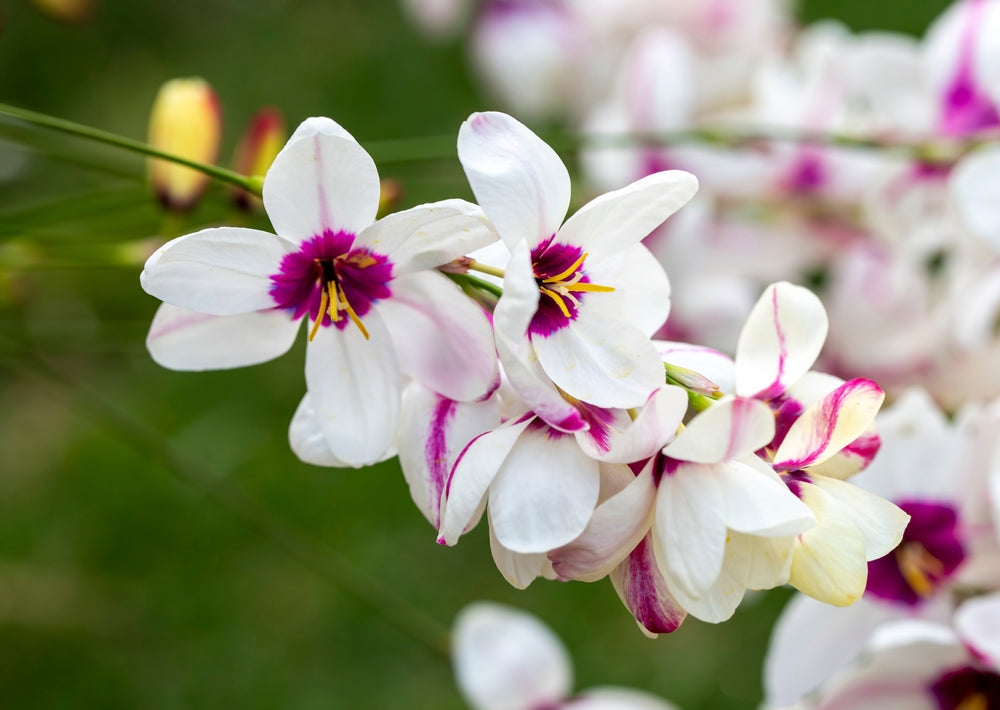Ever pictured ice cream in the form of flowers? Those tall servings of delightful ice cream scooped up on cones - but make them flowers. That's what Hyacinth flowers look like!
With their tall, clustered flowers of stunning colors and backdrops of glossy, dark green leaves, Hyacinth flowers make for the most majestic garden flowers. However, growing any flower so exotic can be slightly tricky and can require a little more of your time. But the reward is priceless and completely worth it!
Buy Hyacinth Bulbs
Here are a few tips for when you're growing flowers from Hyacinth bulbs:

• Growing Hyacinth Flowers from Bulbs
Usually, flower bulbs can be planted in the early months of fall and you will be able to see blooms from early to mid winter months. But there are some things that you must remember when planting flower bulbs.
1. Planting Hyacinth Bulbs at the Right Time
Any and all bulbs that make it past your selection process must be planted at just the right time. Spring bulbs or spring-blooming flowers must be planted in the late fall months - i.e. September. Flowers that bloom in summer time must be planted in winter months after or before the extreme cold hits, because if the bulbs are planted when the plant soil is too cold, the roots will not get a chance to develop.
Hyacinth flowers are winter flowers, which makes the bulbs spring bulbs. So, the bulbs need to be planted in early fall months so that the roots can have a chance to develop.
2. Selecting the Right Spot for your Hyacinth Bulbs

Even if you do choose healthy Hyacinth bulbs, there is a chance that they might not grow and bloom is planted in the wrong spot. Proper flower plant care includes planting your bulbs in the right spot.
When you plant bulbs, remember to plant them in spots that will get full to partial sunlight for at least 4-6 hours per day.
3. Making Sure to Plant Bulbs at the Right Depth
The depth of planting is decided by the size of the bulbs. The bigger the bulb, the farther away it will be from the surface. Usually, the smaller bulbs are planted 4-6 inches in the soil, whereas the bigger ones are placed 6-8 inches deep.
Plants bulbs of the Hyacinth plant at an approximate depth of 3-4 inches. It is recommended to plant them in clusters as this increases the fragrance of the Hyacinth flowers once they bloom.
They need to be planted at the right depth because the stalk needs enough space to rise up out of the ground. If you plant bulbs too deep, the flowers and plants will have a problem with basic development.
4. Giving your Hyacinth Bulbs the Right Soil and Adequate Watering

Flower bulbs need the right kind of soil for optimal development. This means providing them with well-draining soil and adequate watering. A mix of sandy and loamy soil works perfectly for Hyacinth bulbs. Bulbs tend to retain a lot of moisture, so if your soil is heavy, it could impact development.
If your soil is heavy, you can make use of compost or aged manure to improve drainage.
Water the bulbs regularly but remember not to overwater because bulbs are highly susceptible to rot.
5. Plant Bulbs Pointy-Side Up
Oftentimes, people tend to make the mistake of planting flower bulbs with the pointy-side facing downward, pressing into the soil. But the main thing to remember is that all bulbs need to be planted facing upward - with their pointy-side reaching the sky.
If you cannot see a pointy-side, try to look for the roots of the bulb. These roots should face down into the ground.
• Post-Bloom Care for Hyacinth Flowers

1. Deadheading and Pruning
After the Hyacinth bulbs have bloomed into flowers and started to fade, deadheading becomes crucial. Gently remove the spent blooms by snipping the flower stalks near the base using clean, sharp scissors or professional pruning shears.
This encourages the plant to direct its energy towards bulb growth rather than seed production. Pruning also helps maintain the aesthetic appeal of your Hyacinth plant.
Buy Pruning Tools
2. Leave the Hyacinth Plant Foliage Intact
While you might be tempted to trim the foliage once the flowers have faded, resist the urge. The leaves play a big part in maintaining the plant's health as they continue to photosynthesize and provide nutrients to the hyacinth bulbs.
Allow the foliage to wither naturally before removing it. This process ensures the plant bulbs receive the energy needed for the next blooming cycle.
3. Watering and Soil Conditions

Proper watering is essential for the post-bloom care of your Hyacinth plants. Ensure the soil remains consistently moist but not waterlogged. Hyacinths prefer well-draining soil to prevent bulb rot.
Reduce the frequency of watering as the foliage starts to yellow and die back, as this indicates the end of the growing season. During this dormancy period, it's important to avoid overwatering.
4. Fertilizing your Hyacinth Plant
To support the health of your Hyacinth bulbs, you must provide them with a balanced, all-purpose fertilizer. Apply the fertilizer in early spring months as the Hyacinth flowers begin to emerge again after flowering.
5. Division and Replanting
Every three to four years, you can consider dividing and replanting your Hyacinth bulbs. This helps prevent overcrowding and also promotes better air circulation, reducing the risk of diseases.
Lift the bulbs carefully, separate any offsets, and replant them in well-prepared soil. This rejuvenation process ensures a continuous display of vibrant flowers and plants in your home.

By following these post-bloom care tips for Hyacinth flowers and bulbs, you'll not only maintain the beauty of your home plants but also ensure their longevity and vitality.
With a little attention and care, your Hyacinth plant will reward you with stunning blooms season after season, making your space a haven for flourishing flowers and plants.














